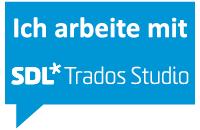Techlinguist Translation Quality
The high quality standards of our translation agency in technical translations are highly appreciated by our clients. This is the result of the hard, consistent and sustained work of our translator and proofreaders, which cannot be seen from the outside.
Our translation agency is known for high quality
All translations in German, Polish, Ukrainian and more that customers receive from us can be used directly, they are ready for printing. This applies to all types of translated documents: User manuals, drawings or localized software. Whether they are to be printed or put online, we have already ensured the necessary quality. How do we achieve this quality? Behind it are years of our experience.
Project management
We have been using professional management tools for years. This way we never miss a deadline and always have all important data at hand. This is necessary, for example, to find out who personally assigned us to a job in your company many years ago and which translator did it for you. In this way, we can quickly find your personal translator in our database, who is responsible for you and your documentation.
Professional translation
Translations are usually performed using CAT tools (SDL Trados, Across or memoQ). We use the customer's terminology, if available, or use our own databases, called Translation Memory (TM). We maintain these databases independently, as their main purpose is to ensure consistent translation quality over the years. Even if some customers do not know about Trados and databases. However, since we are liable for our translations, working with such databases and no less important than for our clients.
Individual support
Permanent clients of our translation agency have their own "personal" translator, who takes over all the orders of the corresponding client and is therefore well trained. After the translation is completed, the first PC-assisted quality control is also performed, this option is built into all CAT tools.
Proofreading
All translations are usually proofread (according to the so-called "4-eyes principle"). Our proofreaders are experienced translators themselves. Proofreading is done in three phases:
Phase 1:
Text analysis with Errorspy, a tool that finds errors such as forgotten text or inconsistent terminology.
Phase 2:
Reading and comparing the text with the original, and correction by the proofreader of stylistic and grammatical errors.
Phase 3:
Reading of the texts by the project manager when it comes to documents that will be printed or published on the Internet.


